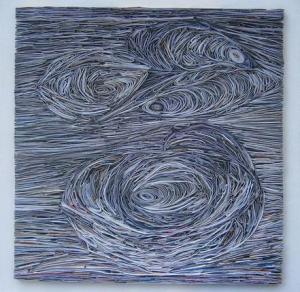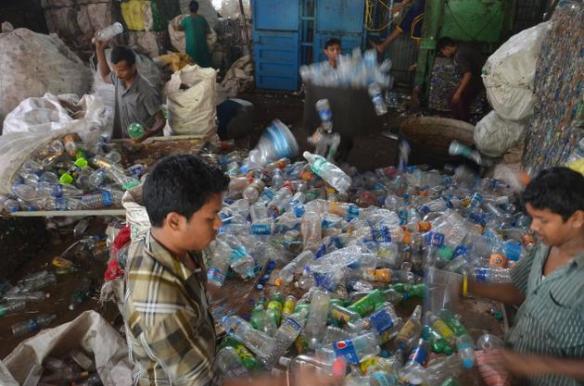Chennai-based architect Benny Kuriakose tells me about the changing definitions of sustainable living

Benny Kuriakose. Photo: R. Ravindran THE HINDU
In architect Benny Kuriakose’s mind, there’s a fledgling dream that’s taken root and pushes forth shoots. He dreams of solar-powered apartments that exist off the grid but for air-conditioning, where a planted indigenous forest co-exists with rain-harvested water bodies, where each home opens into his trademark courtyard and ornate veranda, and each floor hosts common living and dining spaces, where terrace farming feeds its inhabitants and the aged find convenience and purpose; where the best of commune living meets the standards of urban design.
Only, these aren’t just dreams.
They’ve materialised into site drawings and floor plans, multi-dimensional projections and cross-sectional views, and most recently found a Coimbatore-based buyer. For the architect best known for designing DakshinaChitra’s public buildings and heritage homes, for fronting Chennai’s alternative architecture subculture, and for helming the Muziris Heritage Project as conservation consultant, this foray into “green living” is his next phase of reinventing the definition of sustainable architecture.
The seeds to his career path were sown as a young idealistic student working with Kerala Shastra Sahitya Parishad that nurtured in him the science of sustainability. In 1984, fresh out of College of Engineering, Thiruvananthapuram, Benny interned with Laurie Baker, whose philosophy of architecture synced perfectly with his personal ideology. From 1985, he grew from strength to strength in Kerala, building low-cost houses that mirrored Laurie’s style, until his popularity peaked in 1992 with the building of actor Mammootty’s house. “Deep within though, I knew it was time to move away from Baker buildings and discover my own architectural voice,” says Benny. It was Laurie himself, who directed Benny toward DakshinaChitra, where he eventually made a name transplanting and reassembling entire traditional Kerala homes. Talent aside, Benny says he owes this young success to the anonymity and freedom to experiment that Chennai offered him, away from the arclights in Kerala. “Chennai gave me creative rebirth.” It also gave wings to his first love, conservation architecture, the subject of his masters in University of York, England.
For the last five years, Benny has given this passion full expression through the Muziris Heritage Project. Floated in 2008, it is India’s largest conservation project that would spread over 25 sites and links Kerala’s histories of Dutch, Arabic, Chinese, Jewish, Greek, Portuguese and Roman roots in the forgotten port of Muziris from 1 Century BC onward. “Research and excavations have shown that there were close to 400 historic buildings here, about ten per cent of which we’ve begun to restore. It’s not even scratching the surface.” Under the leadership of the then Kerala finance minister Thomas Isaac, Benny and his team drew up the project’s master plan, immediate among which were the successful restoration of the 1615 Paravoor synagogue, with even a replica of the original ark of the testament made, and the renewal of the Dutch 1663 Paliam Palace. The first phase of the Muziris Heritage Project is finally set to be inaugurated by the President of India next month.
For the scale and ambition of the project, it’s been compared to the conservation of Greece’s Athens and Cambodia’s Angkor Wat, and the UNESCO hopes to integrate it into its worldwide Spice Route trail. But for all the efforts Benny and his team have showered on the project, its progress has been slow, courtesy characteristic political hiccups. Benny’s satisfaction though, comes from the local community’s involvement with the project, which included even the rehabilitation of the still-thriving Kottapuram and Paravur markets. “We had no model for this project; our only guiding principle was to never approach it top-down with forced legislation, but to build it grassroots upward.”

The proposed renovation of Cherman Juma’ah Masjid’s basement
The success of this outlook was most evident when the regional heads of the Cherman Juma’ah Masjid, believed to be India’s oldest mosque, built in 629 AD by Malik Ibn Dinar, requested the project to restore the mosque to its original state. Over the years, atypical minarets and domes, metal sheets and GI roofs had been appended to the structure, modernising it out of character. “The older generations simply mimicked stereotypical Persian architecture when they re-did it. Our restoration will replicate the turn of the first century Arab mosques, which will be more consistent with the times Cherman was built in.”
In the two decades that Benny has worked in conservation architecture, the sphere has mushroomed in India from nonexistent to flourishing, thanks to greater awareness of heritage preservation. “Back when I began, there were hardly any projects. But one needed to live! So I took to building new houses that drew from the traditional Kerala and Chettinad styles I’m familiar with, and reinterpreted them contemporarily.”
Today, Benny is known for structures built of natural materials, timber, timbre, stone,

One of the many low-cost houses Benny has designed in Chennai include Casa Rojo.
exposed brick and much else, that are energy efficient, thermal controlled and environment friendly. Nature segues seamlessly into his houses’ interiors through broad courtyards and verandas. “I begin each new house on a blank slate. All I’m sure of is that our homes must cater to our various moods, not force occupants to adjust their personalities to the concrete boxes we now build.” Benny’s unconventional material choices have often led his architecture to be labelled low-cost, but as he is quick to clarify, low-cost is relative, and means “performance approach to cost reduction,” a definition he imbibed from Baker. In practice, it took spacious lands and a considerable budget for these artisan homes, a luxury often affordable only to the elite.
To balance the tilt of this see-saw, in some sense, Benny spent three years of his life, from 2005, in Tharangambadi and Chinnangudi villages in Nagapattinam, designing almost 1,500 individualised homes for fisher folk under the Tsunami Rehabilitation Project. Earlier this year, he completed his Phd on low-income housing from IIT, which focuses on the social and cultural factors that dictate the success or failure of public housing, where current research has only zeroed in on its physical aspects. “It’s true that we have public houses built in the 80s collapsing barely 25 years later; if we could build better, surely they’d last longer.” But an ignored aspect, says Benny, has been in examining what degree of ownership inhabitants have over these houses, and whether their sense of community encourages or dissuades upward social mobility. A book of this thesis is set to release this year.
“It’s taken me all these years to realise just how important it is to theorise in academic terms, what I’ve learnt from over two decades of practical experience,” says Benny. His home-office on Ranjith Road is flooded with interns and young architects eager to learn from him; more books are in the pipeline and, in two weeks, Benny will also conduct a three-day workshop at DakshinaChitra on his brand of vernacular architecture.
There’s an example he loves to tell his students of how when he built Chandramandapa and Chandramandala at Spaces in Besant Nagar, in honour of dancer Chandralekha, the skeleton of his structure already lay in the Natyashastra’s ancient stagecraft design principles. His task was only to modernise our native wisdom. “In the 50s and 60s, we made mistakes imitating the Western concrete and glass trends that were never meant for our needs.” Says Benny, “We mustn’t make the same mistakes with alternative alternate and green architecture either.”
And that explains Benny’s decision to enter the apartment market with his new vision for the vast possibilities of green building. “If there’s one critique I may make of Laurie Baker, it is that while he pointed out the pitfalls of mainstream architecture, his own remained niche. With public housing, Muziris and now the “green living” project, I’m attempting to step out of my comfort in the alternative and into the mainstream, but, of course, in my own terms. Is this wise? Only time will tell!”
August 1, 2014
http://www.thehindu.com/features/metroplus/futurefacing-design/article6272325.ece
 It began with the sound of revolution. Delhi-based designer Gaurav Jai Gupta was on the prowl for his next spark of inspiration, when he stumbled upon Word Sound Power, an artist collective by musicians Chris McGuinness and Delhi Sultanate, who repurpose protest music from conflict zones across South Asia into contemporary electronica. Gaurav plugged into ‘Blood Earth’, the album born of the project’s journeys through Kucheipadar village in Kashipur, Orissa, sampling the folk songs that tribals used to defy corporate bauxite mining of their soils. In their desperate cries for autonomy, and charged calls for a united revolt, Gaurav found a story he wanted to tell through clothes.
It began with the sound of revolution. Delhi-based designer Gaurav Jai Gupta was on the prowl for his next spark of inspiration, when he stumbled upon Word Sound Power, an artist collective by musicians Chris McGuinness and Delhi Sultanate, who repurpose protest music from conflict zones across South Asia into contemporary electronica. Gaurav plugged into ‘Blood Earth’, the album born of the project’s journeys through Kucheipadar village in Kashipur, Orissa, sampling the folk songs that tribals used to defy corporate bauxite mining of their soils. In their desperate cries for autonomy, and charged calls for a united revolt, Gaurav found a story he wanted to tell through clothes.













